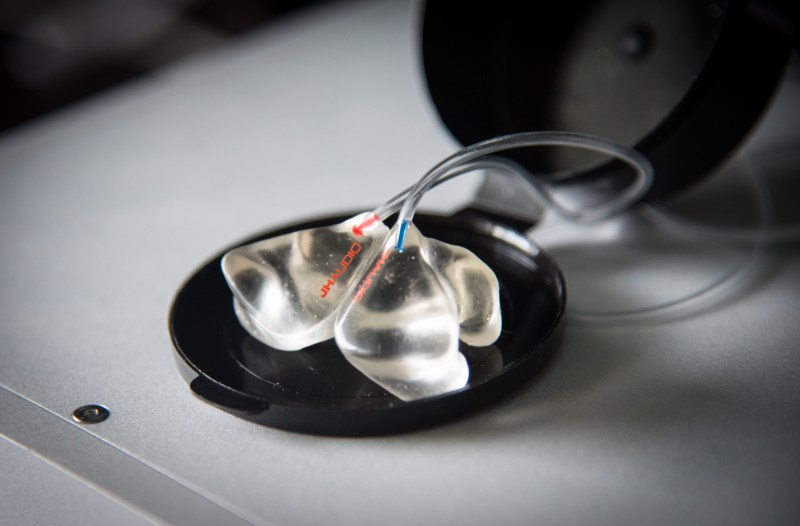How To: Protect Your Hearing

Every once and a while it proves beneficial to stop and take a minute to evaluate the exposure to your ears. As audiophiles, some might even refer to these acoustic receptacles as their “Money Makers.” In order to properly protect your hearing there are a few variables at play, which can be easily implemented with some common sense, a light-weight EDC and simple planning.
Research suggests that damage to your hearing is a result of too loud, for too long. The length of excusable time is exponentially diminished as things get louder, so listening to a hairdryer at 90dB might be OK for two hours or so – but standing next to a jet taking off at 120 dB will start to get dangerous within 7 seconds.
Workplace safety aside, where this becomes critical for audiophiles is really related to how long your listening sessions are in relation to how intense you turn the volume up. One place to start is by measuring how loud your normal listening habit are. Cheap measuring devices are available on the web, as are several less accurate apps for phones. The latest software update to the Apple Watch even includes a measuring app and warning system by default. Take that measurement and compare it to the graph below. If need be, turn it down a bit or shorten your listening times to fit within the guidelines. Or as a general rule of thumb, if you turn it up, listen for only short durations before returning to normal volumes.

Now, all of the above are just guidelines; not all people are affected by sound pressure levels in the same way. NIOSH and OSHA Standards even differ on their recommendations, but sticking to some type of awareness while listening at high levels is definitely a step in the right direction. It’s far too often that we see some of our younger listeners blasting SPL levels though the cups of open-back headphones at personal audio shows. If you happen to venture out to audiophile gatherings like AXPONA or RMAF each year, you may even catch an earful of demo systems with slightly overdone treble. Hearing capabilities for the frequencies on the high end of the spectrum diminish down from 20 kHz as we all get older, so either the person tuning the system is affected or the exhibitor is attempting to corral consumers who happen to land in that pool of demographics. It doesn’t happen often, but often enough to be noticeable.
Listening habits aside, one other big impact for audio fanatics is live concerts. While you are probably safe at any orchestra performance or acoustic setting, amplified concerts can also be a place to exercise caution. While there might be some loose regulations with noise for public consumption, nothing really ever seems to be enforced (in the US anyways). That means the person behind the console has apparent free rein to play at whatever level they deem appropriate. At its best 110dB should be listened to for an hour, some only 30 minutes. Given the average length of any show… you get where I’m going with this.

To counteract the effects, earplugs can be employed, and should be at every occasion. Brightly colored foam options are the easiest to acquire, and do an okay job of isolation. The big problem is usually fit. A twisting motion and deep insertion is needed for a proper seal, but in a busy environment can be somewhat elusive. If you keep a pair for too long, they can get dirty and let sound leak in as well. Quite often the response on the receiving end of the foam is very tilted to the low end, leaving mids and treble response decimated along way. There are several live performance/musician products aimed at counteracting this dilemma, but even the more diverse approaches don’t ever seem to fully deliver on the promise of listening with the same frequency response as going without.
Having trialed and trimmed my way though every product available to both common man and musician, in the end custom silicon earplugs seem to be the easiest and best possible solution for a bad situation for audiophiles.
Many high end in-ear makers have taken up that mantel in recent years. Crafted in much the same manner as CIEMs, dB reductions are often offered in varying levels though the use of removable filters. Typically, acrylic shells are swapped out for the aforementioned silicon. This allows for a little more flexibility in comfort and even fit. Once the perfect seal is attained, a simple “go to” for a protected listening session is quick and easy. Just don’t lose them after your third martini.

Florida-based JH Audio makes a fine custom earplug, available with either filters or in a full silicon piece for maximum reduction. It’s a solid partner for a night out, should the need arise. I usually opt for the clear look to try to avoid anyone noticing, but for those who like a little more flash custom faceplate options are available.
So spread the word, conserve and protect. Turn down the volume if you are going to be listening for long periods of time and perhaps we can help preserve the hearing of future generations along with ourselves. Maybe in 10 years overbooked treble in audio showrooms will be a thing of the past – maybe.
